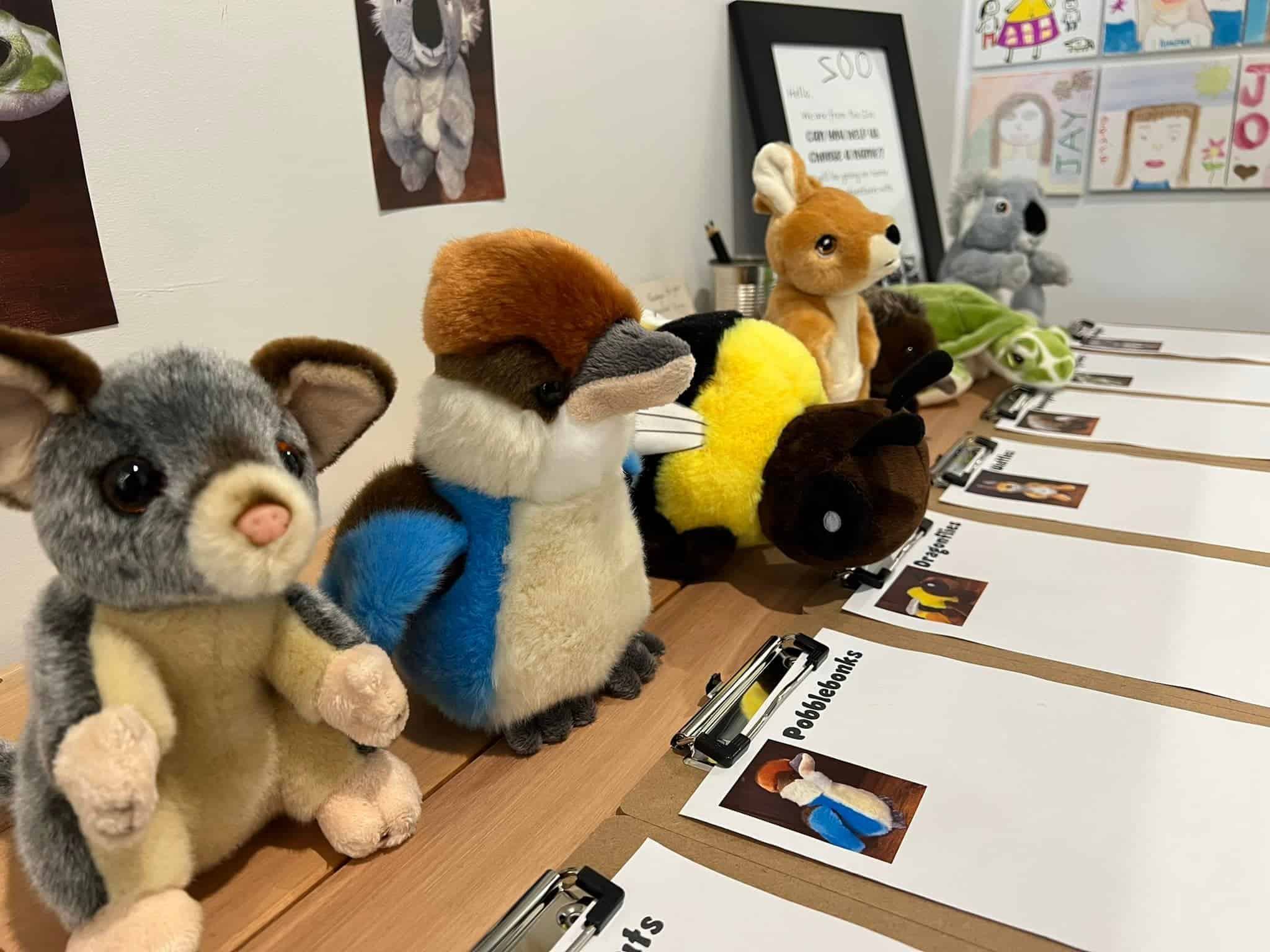Classroom Mascots – Why They Matter
2 November 2022

Did you have a favourite stuffed toy as a child? As it turns out, it may’ve been vital to your early childhood development. Read on to learn how vital these toys are in early learning spaces.
You might’ve noticed the stuffed toy in your child’s Explorers room with a message or name written nearby. It may’ve been a cuddly Koala, a wise old Emu or even a drawing from one of our Little Impressionists. You probably didn’t give it much thought beyond, ‘aw, that’s cute.’
However, these classroom mascots are so much more than just another stuffed toy. In fact, they’re a vital early education resource for increasing attention spans and establishing a sense of belonging and socialisation in children. In this post, we break down the little known benefits of classroom mascots!
What is a Classroom Mascot?
Classroom mascots can be a stuffed toy, an object or even a drawing. They’re almost always given a catchy name, like Emily Emu, Benny Bilby or Lori the Lorikeet. Additionally, classroom mascots are attributed personality traits, so you might find a grumpy kangaroo or a sleepy owl cosying up with the little ones. Establishing an agreed upon name and personality is essential to avoid confusion and arguments among children.
Essentially, classroom mascots act as a blank canvas for children to create a personality profile, complete with likes and dislikes, age and even a backstory (the more detailed the better).

Improved Attention Spans
As you can imagine, creating intricate backstories for classroom mascots is a wonderful exercise for strengthening children’s imaginations. They’re required to keep up with an elaborate network of fictional building blocks that create a cohesive whole.
Moreover, children with active imaginations are free to create fanciful backstories and sprawling family trees for their mascot. Likewise, the less reflective children are encouraged to contribute by building on their peers’ contributions, thereby strengthening relationships during these vital early years.
Teaching Right from Wrong
Some children struggle when adapting to figures of authority. The more wilful children may reject lessons from an adult that aren’t taught by a parent or trusted guardian. Classroom mascots, however, often embody a central message, such as kindness to others, anti-bullying or recycling. This process ultimately simplifies abstract concepts through play and exploration.
Above all, children feel less like they’re being told what to do by a grown up when it’s filtered through a classroom mascot. Rather, children feel like they’re collaborating with a peer.

Bring Children Together
In short, classroom mascots unite classrooms. Children develop entirely unique backstories and identities for each mascot, so no two are exactly alike. Accordingly, this gives children in classrooms a collective sense of identity – and unity – as a group.
A feeling of belonging is essential to children at a developing age, as it sets them up with vital life skills that may lead to a greater chance of success later in life. The Australian Children’s Education and Care Authority (ACECQA) expands upon this need for belonging, outlining that ‘in early childhood, and throughout life, relationships are crucial to a sense of belonging. Belonging is central to being and becoming in that it shapes who children are and who they can become.’
Break Down Cultural Barriers
Australia is one of the most multicultural countries in the world. Despite this, it can still be difficult for some children to understand other cultures among their peers. This is where classroom mascots shine as they don’t judge, discriminate or play favourites.
Brisbane-based education expert and primary school teacher, Holly Mitchell, argues that classroom mascots ease children into ‘experiences that they might prematurely judge – or shy away from – if delivered by a human. In a way, the magical world created by the mascot is a safe place for students to test out their understanding of new cultural information, and new skills in general.

Above all, classroom mascots are wonderful for stimulating children’s sense of imagination, creativity and awe. They engage children through humour and quirky personality traits, like hosts in children’s television shows or the talking animals in your little one’s favourite book.
At Explorers, we encourage children to take classroom mascots home for the weekend on a rotating roster. They take photos, journal their adventures and add them to the class scrapbook. This affords children a sense of responsibility, while also cementing their place in the classroom’s legacy. Importantly, this develops children’s confidence and understanding that they’re part of a community of individuals with their own thoughts, feelings and perceptions.
To tour one of our beautiful Centres, please click here. Otherwise, check out our website to register your interest at Explorers Early Learning today!